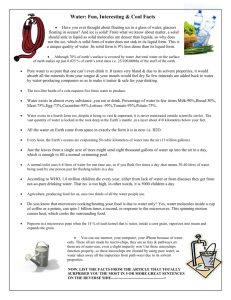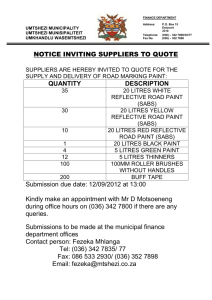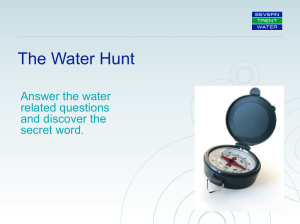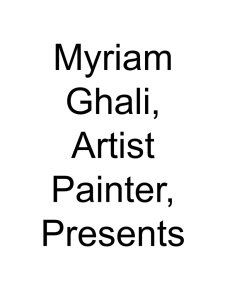Percentages 34.0 KB
advertisement
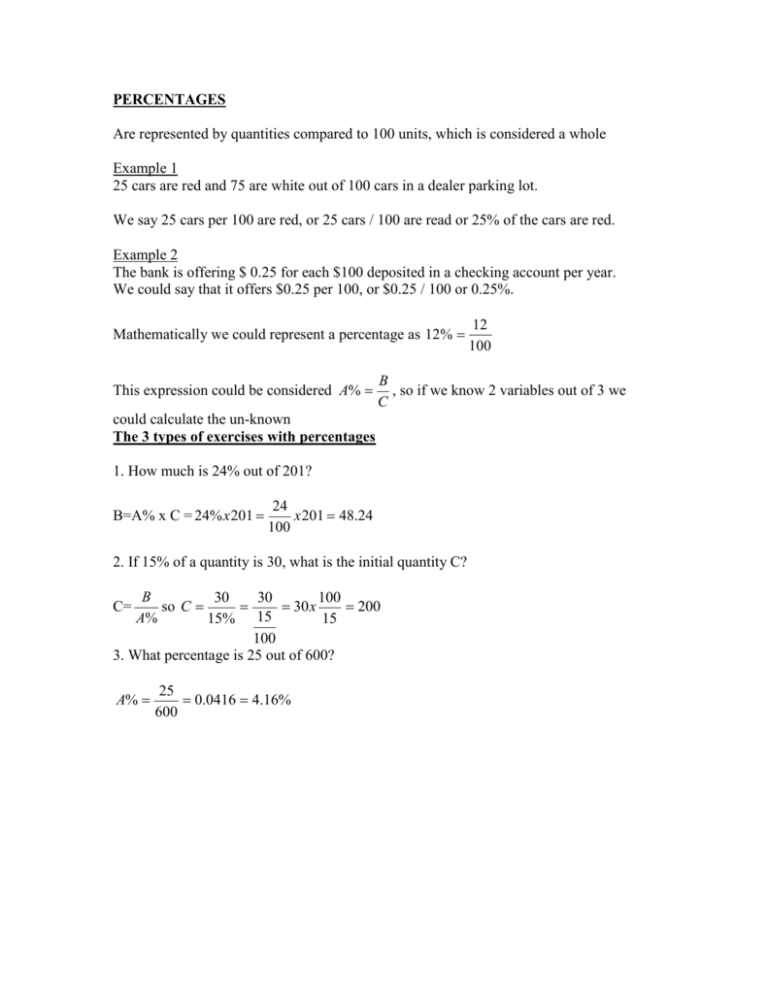
PERCENTAGES Are represented by quantities compared to 100 units, which is considered a whole Example 1 25 cars are red and 75 are white out of 100 cars in a dealer parking lot. We say 25 cars per 100 are red, or 25 cars / 100 are read or 25% of the cars are red. Example 2 The bank is offering $ 0.25 for each $100 deposited in a checking account per year. We could say that it offers $0.25 per 100, or $0.25 / 100 or 0.25%. Mathematically we could represent a percentage as 12% This expression could be considered A% B , so if we know 2 variables out of 3 we C could calculate the un-known The 3 types of exercises with percentages 1. How much is 24% out of 201? B=A% x C = 24% x 201 24 x 201 48.24 100 2. If 15% of a quantity is 30, what is the initial quantity C? B 30 30 100 so C 30 x 200 15 A% 15% 15 100 3. What percentage is 25 out of 600? C= A% 25 0.0416 4.16% 600 12 100 Exercise types We mix 2 same chemicals of 2 different concentrations. One chemical has the concentration of 25% (solution A) and the other one has the concentration of 35% (solution B). How many litres of each solution we need to mix to obtain 100 litres of solution with 30% concentration (Solution C)? The equations we could write with the data given by the exercise are: a+b=100 (1) a=quantity in litres of 25% concentration; b= quantity in litres of 32% concentration In other words if we mix 5 litres of solution A with 7 litres of Solution B we will get 12 litres of the new solution. The quantity of pure chemical in the final solution is the same with the pure chemical of the 2 initial chemicals we are mixing. Quant. pure chem. in solution A+ Quant. pure chem.. in solution B= Quant. pure chemical in solution C (2) So the quantity of pure chemical in solution A is: a x 25% (3) The quantity of pure chemical in solution B is: b x 35% (4) The quantity of pure chemical in solution C is: 100 litres x 30% (5) Substituting in equation (2) the values calculated we get : a x 25% + b x 35% = 100 x 30% (6) We have a set (system) of 2 equations with 2 variables to solve (1) and (6): a+b=100 a x 25% + b x 35% = 100 x 30% or we re-write : a+b=100 0.25a + 0.35b = 0.3 x 100 (7) We will solve it by elimination. We multiply left and right the equation (1) with – 0.25, than we add it to ( 7) - 0.25 a – 0.25 b = - 0.25 x 100 0.25 a + 0.35 b = 0.3 x 100 --------------------------------------0.10 b = 5 => b = 5/0.10 = 50 litres So a = 100 – b = 100 - 50 = 50 litres A store decided to sell a mixture of sun flower seeds with pumpkin seeds The cost of the sun flower seeds is $2/lbs and the pumpkin seeds are sold at $3/lbs. What quantity of each flavour should be taken if the store manager decided to sell 20lbs of mixture with $2.75/lbs. Weuse the same logic as in the example above a+b=20 represents the total weight obtained by adding the 2 type of seeds 2a+3b=20x2.75 the cost of the mixture, by adding the 2 type of seeds -2a-2b=-40 we use the elimination method ---------------b=55-40=15 lbs a=20-15=5 lbs
